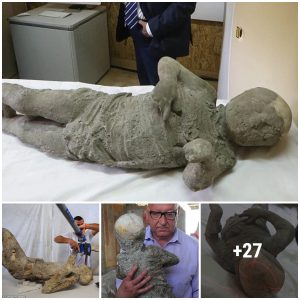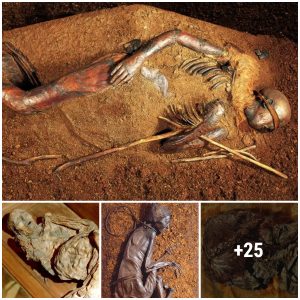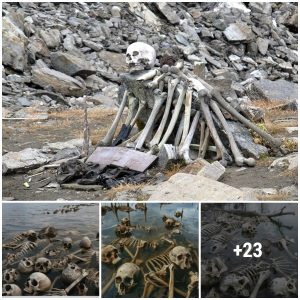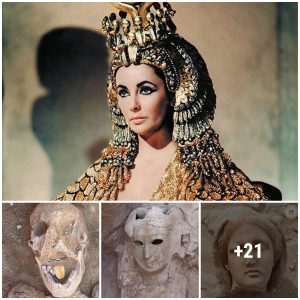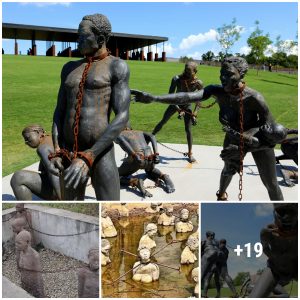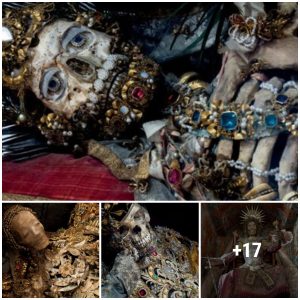When archaeologists were excavating the Grand Bao’en Temple of Nanjing, China in 2008 they came across a significant find – a relic linked to Buddha, Siddhartha Gautama. The artifact was a skull bone found inside a decorated model stupa which was located in an underground shrine. This relic was later put on display in Hong Kong and Macao and received abundant attention by the Chinese media.
Finding the StupaThe first hints of an important discovery came from a stele found in the excavations in July 2008. Macao magazine wrote that the inscription on the stele said “the palace preserved a “Seven-Treasure Pagoda of King Ashoka” containing gold and silver coffins with Sakyamuni’s parietal bone and relics of other Buddhas inside them.” Within the next month the archaeologists unearthed a stone chest with an iron box inside it.

When the iron box was opened, the team encountered a stupa that measures about 4 ft. high and 1.5 ft. wide (117 cm by 45 cm). According to Live Science , “the model is made of sandalwood, silver and gold, and is covered with gemstones made of crystal, glass, agate and lapis lazuli.”
The inscriptions on the stone chest say that the model was made during the reign of Emperor Zhenzong (997-1022 AD), in the Song Dynasty period. The stupa itself also has inscriptions with the names of people who donated money for and built the model. The Telegraph reported that the archaeologists believe the relic is “one of the 84,000 pagodas commissioned by Ashoka the Great in the second century BC to house the remains of the Buddha.”

King Ashoka’s Conversion to BuddhismKing Ashoka is widely remembered as a Buddhist ruler in India. In fact, his contributions to Buddhism and morality are what made him such a renowned figure in Indian history. It has been said that even at a young age Ashoka showed potential to be a successful general and an astute administrator. However, despite his prowess, Ashoka’s chances of succeeding his father were thought to be slim, due to the fact that he had several elder half-brothers.
Nonetheless, one legend claims that Ashoka fought and killed 99 of his brothers in order to inherit the throne. Only his younger brother, Vitashoka, is said to have been spared. Ashoka was a cruel ruler when he first took the throne, but many legends say that he changed his ways after conquering Kalinga. These stories assert that the amount of death and destruction sickened the emperor and incited him to renounce his violent ways and embrace Buddhism.

An inscription found within the stone chest with the pagoda from about 1000 years ago provides more information on the connection between Ashoka and the relic. The text was written by a man calling himself Deming who described his role as “the Master of Perfect Enlightenment, Abbot of Chengtian Monastery [and] the Holder of the Purple Robe.” Live Science wrote that the text says:
“after the Buddha entered parinirvana (a final death that breaks the cycle of death and rebirth), that his body was cremated near the Hirannavati River in India. The man who ruled India at the time, King Ashoka, decided to preserve the Buddha’s remains, which he divided into a total of 84,000 shares…Our land of China received 19 of them, including the parietal bone.”
Displaying the RelicThe skull bone was found within a gold mini-coffin, which was inside a mini silver coffin, inside the model stupa. Live Science describes the coffins as “decorated with images of lotus patterns, phoenix birds and gods guarding the caskets with swords. The outer casket also has images of spirits called apsaras that are shown playing musical instruments.” They also write that “The parietal bone of the Buddha was placed […] along with three crystal bottles and a silver box, all of which contain the remains of other Buddhist saints.”

Speaking on the discovery in November 2008, De Qing, an expert in Buddhism in Nanjing, said:
“The discovery of the relic will have a huge influence on the cultural history of Buddhism in China and will establish Nanjing as a premier site. It will be a great encouragement for Buddhists as well as for future studies. It is important for Buddhism as a religion to have these sarira, or relics, to show its followers. The more a Buddhist practises, the more relics will remain of him after his death. I am hugely excited. I think they should take the skull outside of the container, it is a sacred item, but it is not an untouchable item.”

De Qing was right and his wish to reveal the relic to the public came true. The parietal bone was first revealed at the Qixia Monastery of Nanjing and exhibited for public worship in 2012 in Hong Kong and Macao. It has been said that “Tens of thousands of Buddhist devotees, from Macao, Hong Kong and mainland China, paid their respects to the 2,500-year-old relic” when it was exhibited at that time.
Although the inscriptions accompanying the artifact claim that the skull bone belongs to the Buddha, it has yet to be proven if this is true. Nevertheless, the skull bone has had a significant effect at the time of its exhibitions. For example, Kok Kwong, president of the Hong Kong Buddhist Association during that time told China Daily the first time he saw the skull bone relic. “It was truly joyful. I was filled with Dharma joy,” He also said:
“Seeing the relic is like seeing the Buddha. Buddhism offers a wealth of wisdom, which brings true happiness to people. Worshiping the relic can promote people’s inner mercy, purify people’s minds, and is conducive to world peace.”
Top Image: This gold mini-coffin was found within the silver one. The skull bone of the Buddha, along with remains from other Buddhist saints, were placed inside. After the archaeological excavations, Buddhist monks interred the remains of the saints in Qixia Temple in China. ( Chinese Cultural Relics )
